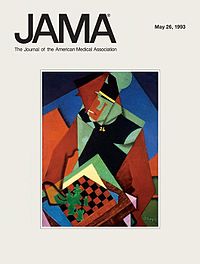Two important articles have come out just in the past few days.
Journal of the American Medical Association
 The first is a JAMA published article about opioid overdose. If I allow myself to do a substantial study the disservice of ultra-condensing its learnings, it says:
The first is a JAMA published article about opioid overdose. If I allow myself to do a substantial study the disservice of ultra-condensing its learnings, it says:
- The first two weeks of treatment with opioids are very dangerous for accidental overdose, and
- Long-duration medicines are the most dangerous during these first two weeks.
These findings are really a big deal. First, that it is not the long-term patient who is at most risk, but the “novice”. So the epidemic of overdoses isn’t only about people developing addiction or tolerance.
Second, the extended release medicines appear to be the most dangerous. This is also contrary to accepted wisdom, which has been that the quick-acting medicines cause a spike in the system, and are more likely to deliver an ecstatic rush (of unearned pleasure, more on this later), and so are more dangerous.
My speculation is that people are in very bad pain right at the beginning of their treatment. Not only hasn’t the pain medicine settled things down, but there has been no time for anti-inflammatory drugs to do their thing, or for physical therapy to have started to help etc. So people take more than prescribed, or drink on top of the opioids, and voilà, respiratory failure. And this is more deadly with long-acting medicines, because the patient can end up with several “layers” active at one time.
The conclusion in the author’s own words:
Conclusions and Relevance To our knowledge, the findings of the present study provide the first evidence that the risk of unintentional overdose injury is related to the prescribed opioids duration of action. If replicated in other cohorts, our findings suggest that clinicians weighing the benefits and risks of initiating different opioid regimens should consider not only the daily dose prescribed but also the duration of opioid action, favoring short-acting agents whenever possible, especially during the first 2 weeks of therapy.
The Washington Post
 The second article is about the rescheduling of many of the most-effective pain medicines from schedule III to schedule II.
The second article is about the rescheduling of many of the most-effective pain medicines from schedule III to schedule II.
The most dramatic effect of this rescheduling is that doctors can no longer authorize refills, or call in subscriptions. The patient must see a doctor once a month, in person, and get a written prescription for continuing care. This makes treatment for chronic pain sufferers dramatically more expensive and inconvenient at the very least.
But for veterans, facing the difficulties of getting appointments in an overloaded Veterans Administration (VA) medical system, the effects are nothing short of tragic. Vets who have suffered devastating injuries, and who have been taking Vicodin (for example) for years without any abuse, are now effectively cut off, because it can take five months to get an appointment with a VA doctor. This doesn’t help if you need a monthly visit for a re-up. And forcing people in great pain to travel sometimes significant distances, for a one-minute appointment that is difficult to arrange, to keep getting their medicine….well, it doesn’t seem right.
And in the worst case, they will just not get the meds they need. This will throw them back into pain, and even if they have shown zero abuse, if they have been taking opioids for a long time, they are quite likely to experience withdrawal symptoms.
Prescription Advisory Responds
It just seems monstrous to me, that our nation could conduct decades of war, and not provide adequate funding to ensure that those who were injured in the service of the country, have adequate medical care. And to compound this failing with ill-conceived changes like this rescheduling, adding even more of a burden to the VA system, and putting even more vets at risk of suicide because of pain or withdrawal, is just heartbreaking.
In fact, the rescheduling of these drugs is using a blunt force instrument to try to combat the problems of addiction and overdose. The impulse is a positive one. Prescription drug abuse is certainly a problem. Prescription Advisory wouldn’t exist if it were not, I suppose.
K
But just making it harder and harder for EVERYONE to get medicine, that a great number of people really need, is a terrible way to approach the issue. Prescribers need tools to quickly and accurately know who can use these controlled substances safely, who needs special support and supervision to do so, who needs treatment for addiction, who needs to be referred to a pain specialist for more complex treatment in the face of tolerance, and who is acting in bad-faith and might be diverting.
Having such tools, perhaps more importantly than anything else, will allow them to comfortably prescribe the medicine to those for whom it is quite likely to be perfectly safe.
- And not treat them with suspicion.
- And not treat them as if they are insufficiently stoic about their pain.
- And not threat them as if they are degenerates because they want their pain treated.
- And not decide whom to treat or not based upon guesswork and prejudices.
- And not fail to identify patients who need treatment for addiction.
- And not fail to identify patients with complex issues who need treatment by a pain management specialist.
- And not decide that they are just seeking un-deserved, un-earned euphoria.
Because the prescribers will have real data to use, to support an informed medical decision. Which is what Prescription Advisory is all about.

